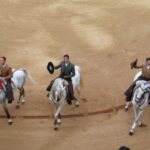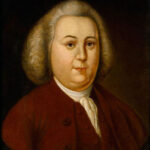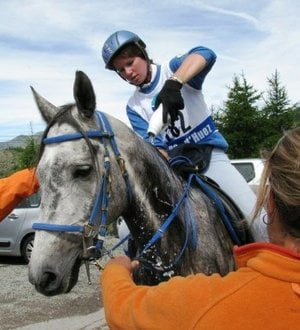In 1788, a humble, quiet man named Justin Morgan moved to the small New England town of Randolph, Vermont. A latter-day Renaissance man, he was an avid horseman, as well as a teacher, composer, and businessman. One year after the move, he purchased a likely-looking bay colt, supposed to have been sired by the well-known True Briton. Morgan named the colt Figure, and it was through him that the Morgan horse as we know it today was born.
As Figure grew, his compactly-muscular frame and stylish gaits attracted widespread attention. Stories of his looks, endurance, strength, and gentleness quickly traveled through the close-knit New England community. His ability to outwork and outpace other horses his size – and larger – would become legendary.
Justin Morgan was no fool, and his business acumen led him to exploit Figure’s popularity, and the small stallion sired foals the length and breadth of the Connecticutt River valley, and occasionally even further afield. He had the unique capacity to pass on his distinguishing characteristics to his foals, and through them often to a second or third generation.
After the death of his wife in 1797, Morgan succumbed to “consumption” a year later, and Figure was sold on. The tough little horse would labor in the fields, as a draft horse, and eventually serve in a militia as a parade mount. After reaching the nearly incredible age of 32, he died from a untreated kick received from another horse while pastured.
However, Figure’s three most famous sons – Woodbury, Bulrush, and Sherman – were ready and able to carry on his legacy. With their great intelligence, willingness to work, and good sense (horse sense, anyone?) poured into a tough, strong little body, the “Morgan” breed was instantly popular among the colonial Americans.
The young nation was intently building herself up, mainly through hard labor and stubborn determination. Morgans slipped easily into this life, working from dawn until dusk without complaint alongside their owners, clearing fields and forests. With the week’s end, they were groomed carefully, and would step along gracefully to Saturday’s market, or Sunday’s church meeting. Morgans were also extremely popular with the New England coach drivers.
In the 1840’s, several breeders in the Vermont area began the first serious attempts to concentrate the Morgan bloodlines. By bringing together second, third, and fourth generation descendants of Figure, they established the foundation of the breed. Less than 15 years later, Morgans were selling across the United States for top dollar prices. In the infant days of harness racing, Morgans set the first world records at the trot. Black Hawk, along with his son Ethan Allen, were household names.
The vast majority of Morgans, however, continued about their daily work quietly and efficiently, their heads unturned by fame. They were highly regarded as true general-purpose horses, well capable of performing nearly any task willingly, and looking good while doing so.
During the War Between the States, Morgans were in high demand as cavalry mounts and artillery teams. The First Vermont Cavalry, with more than 1200 horses, was mounted solely upon Morgans. By the end of the War, sadly, only 200 of their original number survived. Other regiments of cavalry, on both sides, were organized with Morgans: the First Maine; the Second Michigan; the Third Michigan; the Fourteenth Pennsylvania; the Fifth New York, Company H; and the Fourth Virginia, Company H. Today, Morgans can be found in all 50 states, as well as in more than 20 countries worldwide.
There are many color variations allowed within the breed standard. Bay, black, brown, chestnut, gray, palomino, creme, dun, and buckskin are all acceptable. Most Morgans fall between 14.1 and 15.2 hands high, although there are of course exceptions above and below the rule. Over the years, the breed has maintained its stylish appearance with an impressive conformation that lends itself easily to a number of disciplines.
Morgans are often found to make up the majority of the entries at nearly any “Combined Driving and Carriage” event, and were the first American breed to represent the US in the World Pairs Driving competition. They can often be found in many other events as well, including Park Saddle and Harness, English and Classic Pleasure Saddle and Driving, Western, Hunter/Jumper… The list is nearly endless. They are gentle enough for lessons, 4-h and Pony Club involvement, and are in high demand as therapeutic riding mounts, due to their comfortable gaits and kind dispositions.
According to the American Morgan Horse Association (AMHA), the ideal Morgan is “distinctive for [his] stamina and vigor, personality and eagerness, and strong natural way of moving.” The complete Morgan Horse Judging Standards are available upon request in booklet form from the AMHA, which can be contacted via email. A PDF download is also available at their website, for those who are unwilling to trust such precious information to the vagaries of the US Postal Service.





